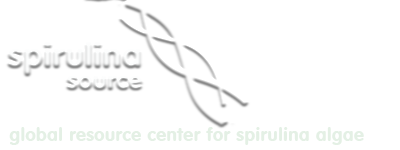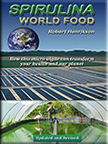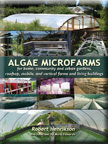Evaluation of chemoprevention of oral cancer with spirulina.
by Babu, M. et al. 1995. Pub. in Nutrition and Cancer, Vol. 24, No. 2, 197-202. India.
The blue-green microalgae spirulina, used in daily diets of natives in Africa and America, has been found to be a rich natural source of proteins, carotenoids and other micronutrients. Experimental studies in animal models have demonstrated an inhibitory effect of spirulina algae on oral carcinogenesis. Studies among preschool children in India have demonstrated spirulina fusiformis to be a effective source of dietary vitamin A. We evaluated the chemoproventative activity of spirulina (1 g/day for 12 months) in reversing oral leukoplakia in pan tobacco chewers in Kerala, India. Complete regression of lesions was observed in 20 of 44 (45%) evaluable subjects supplemented with spirulina, as opposed to 3 of 43 (7%) in the placebo arm. When stratified by type of leukoplakia, the response was more pronounced in homogeneous lesions: complete regression was seen in 16 of 28 (57%) subjects with homogeneous leukoplakia, 2 of 8 with erythroplakia, 2 of 4 with verrucous leukoplakia, and 0 of 4 with ulcerated and nodular lesions. Within one year of discontinuing supplements, 9 of 20 (45%) complete responders with spirulina developed recurrent lesions. Supplementation with spirulina did not increase serum concentrations of retinal or beta carotene, nor was it associated with toxicity. This is the first human study evaluating the chemopreventive potential of spirulina. More studies in different settings and different populations are needed for further evaluations.
Bioavailability of spirulina carotenes in preschool children.
by V. Annapurna, et al. 1991. National Institute of Nutrition, Hyderabad, India. J. Clin. Biochem Nutrition. 10 145-151. India.
The bioavailability of total carotenes and beta carotene from spirulina was examined in apparently healthy preschool children and found to be comparable to those values reported for other plant sources like leafy vegetables and carrots. The study also showed spirulina is a good source of Vitamin A, as there was a significant increase in serum retinol levels. Researchers concluded spirulina can be used as a source of Vitamin A in the diet, is relatively inexpensive, has higher beta carotene than any other plant source and can be cultivated throughout the year.
Large scale nutritional supplementation with spirulina alga.
by C.V. Seshadri. 1993. All India Coordinated Project on Spirulina. Shri Amm Murugappa Chettiar Research Center (MCRC) Madras, India.
A one year feeding program with 5,000 pre-school children showed a symptom of Vitamin A deficiency, “Bitot’s spot”, decreased from 80% to 10%. These rural children near Madras consumed 1 gram of spirulina a day for at least 150 days. This small amount provided the daily requirement of beta carotene (Vitamin A) which can help prevent blindness and eye diseases. In another study with 400 school children, a daily dose of beta carotene from spirulina increased their Vitamin A status to the same level as those administered pure Vitamin A. Spirulina was given to children in a unique way: extruded noodles, sweetened with sugar to preserve the beta carotene. Called “Spiru-Om”, it was well accepted by the children. This project was sponsored by the Indian Government.




